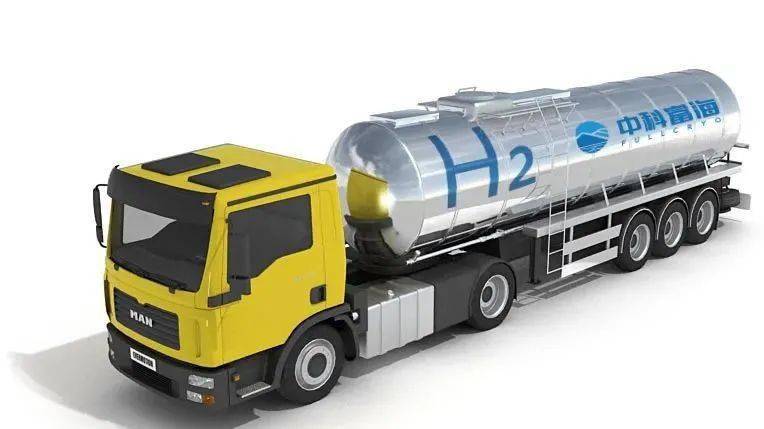When the liquid hydrogen production plant is far away from the user, the liquid hydrogen can be packed in a special low-temperature insulation tank and transported on a truck, locomotive, ship or plane. This is a fast and economical hydrogen transportation method that can not only meet the requirements of large hydrogen transportation volume, but also relatively fast and economical.
The liquid hydrogen tanker is the key equipment, and the horizontally placed cylindrical low-temperature insulation tank is commonly used.
Liquid hydrogen storage tank for automobiles can store up to 100m³ of liquid hydrogen, and the special large-capacity tank car for railways can even transport 120~200m³ of liquid hydrogen. According to literature reports, the capacity of liquid hydrogen storage tanks in Russia ranges from 25m³ to 1437m³. Among them, the 25m³ liquid hydrogen storage tank has a dead weight of about 19 tons, and can store 1.75 tons of liquid hydrogen. The hydrogen storage weight percentage is 9.2%. The storage tank has a daily evaporation loss of 1.2%; the 1437m³ liquid hydrogen storage tank has a dead weight of about 360 tons and can store liquid The hydrogen is 100.59 tons, the weight percentage of hydrogen storage is 27.9%, and the daily evaporation loss of the storage tank is 0.13%. It can be seen that the storage density and loss rate of liquid hydrogen have a greater relationship with the volume of the hydrogen storage tank. The hydrogen storage effect of a large hydrogen storage tank is better than that of a small hydrogen storage tank.
Liquid hydrogen can be transported by ship, which is similar to transporting liquefied natural gas (LNG), but requires better insulation materials to keep liquid hydrogen in a liquid state during long-distance transportation.

NASA has also built a large dedicated barge to transport liquid hydrogen. The barge is loaded with a large-capacity liquid hydrogen storage container. This barge can transport liquid hydrogen from Louisiana to the Kennedy Space Launch Center in Florida by sea. The liquid hydrogen storage capacity of the low-temperature insulation tank on the barge can reach about 1000m³. Obviously, this large-capacity liquid hydrogen transportation by sea is more economical and safer than land rail or highway transportation.
Japan, Germany, and Canada all have similar reports. In 1990, the German Materials Research Institute announced that liquid hydrogen is as safe as liquefied petroleum gas (LPG) and liquefied natural gas (LNG), and it is allowed to transport liquid hydrogen to German ports. Transportation is better than sea transportation, because the weight of liquid hydrogen is light, which is beneficial to reduce the freight, and the transportation time is short and the liquid hydrogen is less volatilized.
In special occasions, liquid hydrogen can also be transported by special liquid hydrogen pipelines. Since liquid hydrogen is a low-temperature (-253℃) liquid, its storage containers and pipelines for transporting liquid hydrogen must have a high degree of thermal insulation. Even so, there will be a certain amount of cooling loss, so the insulation structure of the pipeline container is more complicated.
Liquid hydrogen pipelines are generally only suitable for short-distance transportation.